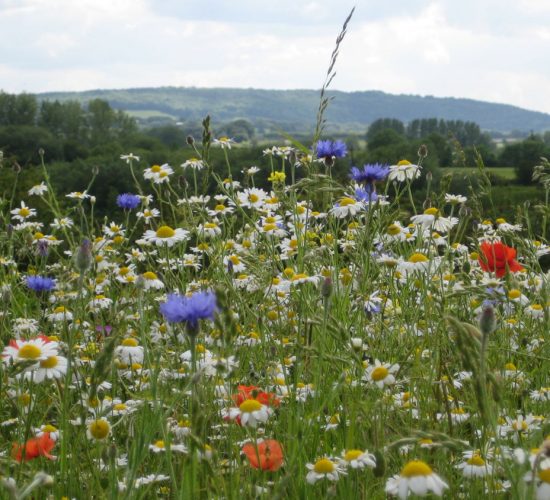Thank you for signing up to Bucks Buzzing and helping to support pollinating insects across Buckinghamshire & Milton Keynes. Wildflower habitat is an important resource for insects and other wildlife, but it is a habitat that is in decline. An estimated 97% of wildflower meadow habitat has been destroyed across England since the 1930s, which is having a catastrophic impact on insect populations. This is also detrimental to other wildlife that relies on insects as a food source, including birds, reptiles and small mammals.
Bucks Buzzing aims to tackle this decline with our wildflower seed promotion.
This project has been running since 2016 and we know how important sustainably-sourced and native seed is to many of our supporters. We have chosen a “Bee Mix” that combines both annual and perennial native wildflowers, all harvested from what were originally wild meadow populations in the UK. This means you will get a good flourish of flowers in the first year from the annuals, as well as long-lasting impact in years to come from the perennials.
Although it has been selected to suit bees, not just the bees will love it! All insects will enjoy this mix, including butterflies and hoverflies. It also has the benefit of a long flowering season, from early spring through to late August/early September.

This mix is easy to grow and suitable for gardens and planters. Each packet contains 2 grams of wildflower seeds, which may not sound like a lot, but it is enough to cover an area of 1 to 2 metres square.
Wildflower seeds thrive in low-nutrient soil, so no topsoil or compost is needed for these seeds.
Plant your seeds when the soil is warm and moist. Typically, this means in spring (March/April/May) or in the autumn (September through to the end of October, or even later depending on the weather!). Autumn is really the optimal time for planting wildflower seeds – just like in nature!
Ready to plant? Here are step-by-step instructions:
And that’s it! Sit back and wait for flowering to begin!
The annual wildflowers in this seed mix will flower around 60 days after seeding in spring (or in the following flowering season, if you are planting in autumn.) However, the perennials have more variety. A few will flower in their first year but some won’t even germinate until year two, so please be patient with them. The perennials will keep coming back year after year to provide colour, pollen and nectar in your garden.
As stated above, this wildflower seed mix contains a mix of native annual and perennial wildflower seeds, suitable for planting in your home garden or in a planter. These wildflowers have been selected not only to provide a long flowering window, but also to suit a range of native bumblebees and solitary bees (although honeybees, butterflies and other insects will appreciate them too).
This mix contains the following species in varying amounts:
Cornflower (Centaurea cyanus)
Corn Marigold (Glebionis segetum)
Corn Poppy (Papaver rhoeas)
Field forget-me-not (Myosotis Arvensis)
Bird’s-foot trefoil (Lotus corniculatus)
Teasel (Dipsacus fullonum)
Viper’s Bugloss (Echium vulgare)
Wild mignonette (Reseda lutea)
Common Knapweed (Centaurea nigra)
Lady’s Bedstraw (Galium verum)
Field Scabious (Knautia arvensis)
Wild Marjoram (Origanum vulgare)
Red clover (Trifolium pratense)
Selfheal (Prunella vulgaris)
Red Campion (Silene dioica)
Ragged Robin (Silene flos-cuculi)
White Campion (Silene latifolia)
Hedge Woundwort (Stachys sylvatica)
Tufted Vetch (Vicia cracca)
Bush Vetch (Vicia sepium)
Although these are all UK native species and sourced from UK meadows, please do not plant these seeds in nature reserves or areas of special conservation, as this may have an impact on the unique local character of the site.